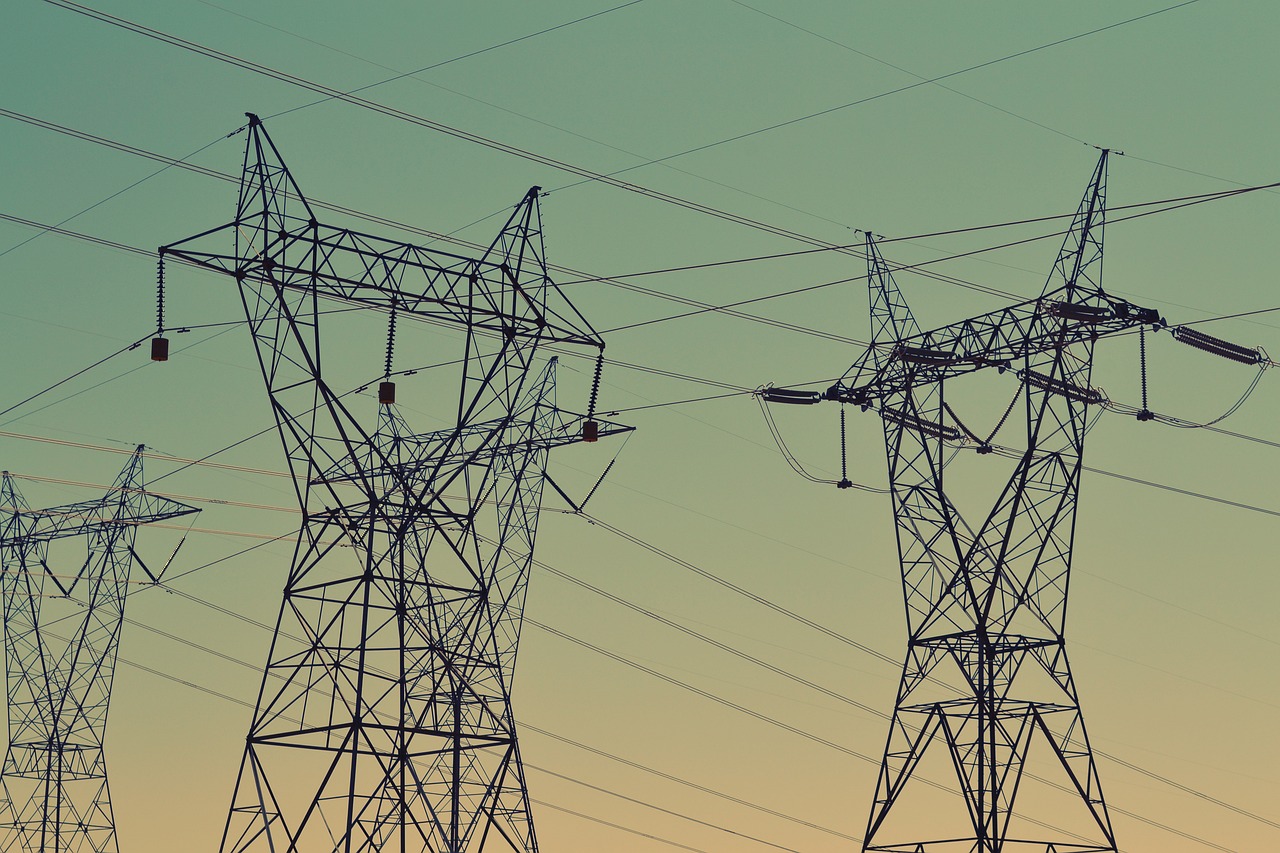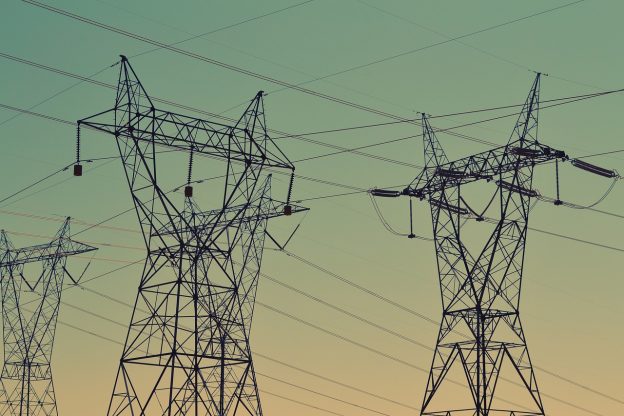In today’s fast-paced world, where environmental consciousness is on the rise and energy costs are soaring, businesses are increasingly seeking ways to operate more efficiently. Energy-efficient technology has emerged as a game changer in helping companies save on energy consumption, reduce costs, and minimize their carbon footprint. This article aims to provide a comprehensive understanding of energy-efficient technology and its implications for businesses. By highlighting the benefits, exploring the various applications, and addressing common concerns through frequently asked questions, this article equips business owners and leaders with the knowledge they need to make informed decisions and take advantage of this transformative technology. Make the call to our lawyer specialized in energy-efficient technology today and embark on a path towards sustainability and economic growth.
What is Energy-efficient Technology?
Definition
Energy-efficient technology refers to the use of technological advancements and practices that minimize energy consumption while maintaining or improving performance. This involves designing and implementing systems, equipment, and processes that utilize less energy to perform the same tasks compared to traditional methods. Energy efficiency is achieved by optimizing energy use, reducing waste, and implementing innovative solutions.
Importance
Energy-efficient technology plays a crucial role in addressing the growing concerns of energy consumption, climate change, and natural resource depletion. By minimizing the energy requirements, businesses can lower their environmental impact, reduce greenhouse gas emissions, and conserve valuable resources. Embracing energy efficiency not only supports sustainable practices but also brings economic benefits, including cost savings, increased competitiveness, and improved public perception.
Benefits
The adoption of energy-efficient technology brings a wide range of benefits for businesses. These include:
-
Cost Savings: One of the significant advantages of energy-efficient technology is the potential for cost savings. By reducing energy consumption, companies can significantly lower utility bills, leading to improved financial performance and profitability.
-
Environmental Impact: Energy efficiency measures contribute to reducing greenhouse gas emissions, promoting a cleaner and healthier environment. By using less energy, businesses decrease their carbon footprint and play their part in combating climate change.
-
Improved Equipment Lifespan: Energy-efficient technology often involves the use of high-quality, advanced equipment that operates more effectively. This leads to a reduced strain on machinery and increases their lifespan, resulting in longer-term savings and minimized downtime.
-
Enhanced Comfort and Productivity: Energy-efficient systems, such as smart thermostats and lighting, offer improved comfort and convenience for employees. This pleasant working environment can lead to increased productivity, better employee satisfaction, and reduced absenteeism.
-
Compliance and Reputation: Embracing energy-efficient technology can help businesses meet regulatory requirements and demonstrate their commitment to sustainability. This can enhance their reputation among stakeholders, including customers, investors, and the local community.
Types of Energy-efficient Technology
Energy-efficient Lighting
Energy-efficient lighting systems, such as Light Emitting Diode (LED) technology, are designed to minimize energy consumption while providing optimal illumination. LED lights are highly efficient, have a longer lifespan, and produce less heat compared to traditional lighting options like incandescent or fluorescent bulbs. By replacing conventional lighting fixtures with energy-efficient alternatives, businesses can significantly reduce their electricity usage and lighting costs.
Smart Thermostats
Smart thermostats are programmable devices that allow businesses to control and optimize their heating, ventilation, and air conditioning (HVAC) systems. These innovative devices enable businesses to automate temperature adjustments based on occupancy schedules, weather conditions, and energy demand. By utilizing smart thermostats, businesses can optimize comfort levels, reduce energy waste, and lower heating and cooling expenses.
Energy-efficient Appliances
Energy-efficient appliances, such as refrigerators, dishwashers, and washing machines, are designed to use less energy while maintaining their functionality. These appliances typically have the ENERGY STAR label, indicating that they meet or exceed energy efficiency standards set by the Environmental Protection Agency (EPA). By replacing outdated appliances with energy-efficient models, businesses can reduce their electricity usage and decrease operating costs.
Insulation and Weatherization
Insulation and weatherization techniques involve improving the building envelope to reduce energy loss due to air leakage and inefficient thermal control. Proper insulation, sealing air leaks, and installing energy-efficient windows can significantly enhance a building’s energy efficiency by minimizing heat gain in the summer and heat loss in the winter. This results in reduced heating and cooling demands, leading to cost savings and improved comfort.
Renewable Energy Systems
Renewable energy systems, such as solar panels, wind turbines, and geothermal systems, harness clean and renewable sources of energy to power businesses. By generating electricity onsite from renewable sources, businesses can reduce their reliance on traditional grid electricity, decrease their carbon footprint, and potentially save on energy costs over the long term. The integration of renewable energy systems also allows businesses to showcase their commitment to sustainable practices.

Energy-efficient Technology in Business
Reducing Energy Consumption in Office Spaces
Businesses can reduce energy consumption in office spaces through various measures. These may include optimizing HVAC settings, improving insulation, and using energy-efficient lighting. Additionally, encouraging employee behavior changes, such as turning off lights and equipment when not in use, can contribute to significant energy savings. Implementing energy-efficient practices in office spaces not only reduces operating costs but also demonstrates environmental responsibility and leadership.
Energy-efficient Equipment and Machinery
Businesses can invest in energy-efficient equipment and machinery to improve their overall energy efficiency. Upgrading to energy-efficient appliances, HVAC systems, and industrial machinery can lead to substantial energy savings. Conducting energy audits and consulting with experts can help businesses identify opportunities for equipment upgrades and replacements that will optimize energy usage.
Monitoring and Tracking Energy Usage
Monitoring and tracking energy usage is crucial for identifying areas of energy waste and implementing targeted energy-saving measures. Businesses can use advanced energy management systems and software to monitor energy consumption in real-time, identify patterns and anomalies, and make informed decisions regarding energy usage. With accurate data, businesses can identify inefficiencies and implement measures to reduce energy waste effectively.
Implementing Energy Management Systems
Energy management systems (EMS) facilitate comprehensive planning, monitoring, and control of energy resources and processes. EMS enables businesses to optimize energy usage, reduce waste, and maintain efficient operations. By implementing an EMS, businesses can set energy targets, track progress, and implement strategies to achieve energy efficiency goals effectively.
Government Incentives and Policies for Energy Efficiency
Tax Credits and Rebates
Governments often provide tax credits and rebates to incentivize businesses to adopt energy-efficient technology and practices. These incentives help offset the initial costs of implementing energy efficiency measures and encourage businesses to make sustainable investments. By taking advantage of these incentives, businesses can further reduce the financial burden of adopting energy-efficient technology.
Energy Efficiency Standards and Regulations
Governmental bodies establish energy efficiency standards and regulations that businesses must comply with. These standards ensure minimum energy performance requirements for various products and systems, such as appliances, lighting, and building codes. By adhering to these standards, businesses contribute to energy conservation efforts and avoid potential penalties or legal complications.
Government Energy Efficiency Programs
Governments often initiate energy efficiency programs to assist businesses in adopting energy-efficient technology. These programs may include educational campaigns, technical assistance, and financing options to help businesses overcome barriers to energy efficiency implementation. By participating in government programs, businesses can access valuable resources and support that facilitate their transition towards energy efficiency.

Case Studies: Successful Implementation of Energy-efficient Technology
Case Study 1: Energy-efficient Retrofitting in a Manufacturing Plant
In this case study, a manufacturing plant successfully implemented energy-efficient retrofitting measures to reduce energy consumption and improve operational efficiency. The plant conducted a comprehensive energy audit, identifying areas of energy waste and opportunities for improvement. Based on the audit findings, the plant upgraded their lighting systems with energy-efficient LED fixtures, installed insulation to reduce thermal losses, and implemented a real-time monitoring system. As a result, the plant achieved significant energy savings, lowered operating costs, and improved overall productivity.
Case Study 2: Energy-efficient Lighting Upgrade in Office Buildings
A real estate company undertook an energy-efficient lighting upgrade in their office buildings, aiming to reduce energy consumption and create a more comfortable and sustainable workspace. The company replaced traditional fluorescent lighting with energy-efficient LED fixtures, implemented occupancy sensors, and integrated lighting controls. This upgrade resulted in reduced lighting energy usage by 50%, improved lighting quality, and enhanced employee satisfaction and productivity.
Case Study 3: Adoption of Renewable Energy Systems in a Company
A technology firm embraced renewable energy systems by installing solar panels on the roof of their office building. The solar panels generated clean and sustainable electricity, reducing the company’s reliance on grid electricity and lowering their carbon footprint. The adoption of renewable energy systems allowed the company to showcase their commitment to sustainability, attract environmentally-conscious clients, and potentially save on long-term energy costs.
Challenges and Limitations of Energy-efficient Technology
Cost Considerations
Implementing energy-efficient technology often requires upfront investments, which can pose financial challenges for businesses. The initial costs of purchasing energy-efficient equipment, conducting energy audits, and implementing system upgrades can be significant. However, it is crucial to consider the long-term cost savings and return on investment associated with energy efficiency measures.
Technical Compatibility and Integration
Integrating energy-efficient technology into existing systems and infrastructure can be challenging. Compatibility issues may arise when attempting to retrofit old machinery or buildings with energy-efficient upgrades. Businesses need to assess technical feasibility, consider compatibility challenges, and collaborate with experienced professionals to ensure seamless integration and maximize the benefits of energy-efficient technology.
User Adoption and Behavioral Changes
Achieving energy efficiency requires active participation and behavioral changes from employees and stakeholders. Resistance to change, lack of awareness, or inadequate training can hinder effective adoption of energy-efficient technology. It is essential for businesses to provide training, engage employees, and create awareness campaigns to foster a culture of energy efficiency and encourage sustainable behaviors.
Future Trends in Energy-efficient Technology
Advancements in Building Automation Systems
Building automation systems are becoming increasingly sophisticated, integrating multiple systems and devices to optimize energy use. These advanced systems utilize sensors, artificial intelligence, and machine learning algorithms to automate and optimize energy-intensive processes. Future advancements in building automation systems will play a pivotal role in maximizing energy efficiency and creating intelligent and sustainable buildings.
Integration of Internet of Things (IoT) and Energy Efficiency
The Internet of Things (IoT) is revolutionizing the energy efficiency landscape by connecting devices, systems, and appliances to share data and automate processes. IoT-enabled energy management systems can monitor and control energy usage remotely, making adjustments based on real-time data and user preferences. This integration of IoT and energy efficiency will drive more personalized and efficient energy consumption patterns.
Emerging Technologies for Energy Conservation
Various emerging technologies hold the potential to further enhance energy conservation efforts. These include advanced energy storage systems, smart grids, and innovative energy management software. By leveraging these technologies, businesses can optimize energy utilization, manage peak demand, and ensure a reliable and efficient energy supply.
FAQs
What is the definition of energy-efficient technology?
Energy-efficient technology refers to the use of technological advancements and practices that minimize energy consumption while maintaining or improving performance. It involves designing and implementing systems, equipment, and processes that utilize less energy to perform the same tasks compared to traditional methods.
Why is energy-efficient technology important?
Energy-efficient technology is essential for addressing concerns related to energy consumption, climate change, and resource depletion. It helps businesses reduce their environmental impact, conserve valuable resources, and decrease greenhouse gas emissions. Additionally, energy efficiency measures bring financial benefits such as cost savings, increased competitiveness, and improved public perception.
What are the benefits of using energy-efficient technology?
The benefits of energy-efficient technology include cost savings, reduced environmental impact, improved equipment lifespan, enhanced comfort and productivity, and compliance with regulations. Additionally, adopting energy-efficient technology can enhance a business’s reputation and demonstrate its commitment to sustainability.
What types of energy-efficient technology are commonly used?
Commonly used energy-efficient technologies include energy-efficient lighting systems, smart thermostats, energy-efficient appliances, insulation and weatherization techniques, and renewable energy systems such as solar panels and wind turbines.
How can businesses implement energy-efficient technology?
Businesses can implement energy-efficient technology by reducing energy consumption in office spaces, investing in energy-efficient equipment and machinery, monitoring and tracking energy usage, and implementing energy management systems. It is also crucial for businesses to consider government incentives, adhere to energy efficiency standards and regulations, and explore energy efficiency programs for support and guidance.
Please note that contacting a lawyer for personalized advice regarding energy-efficient technology and any legal obligations or benefits specific to your business is essential.












